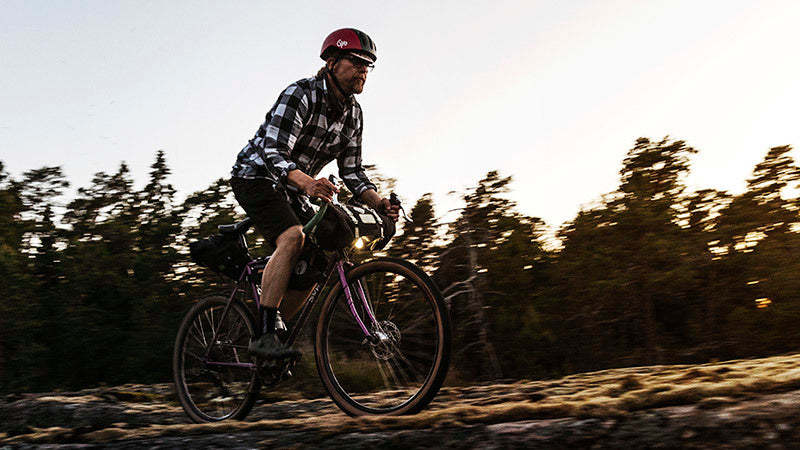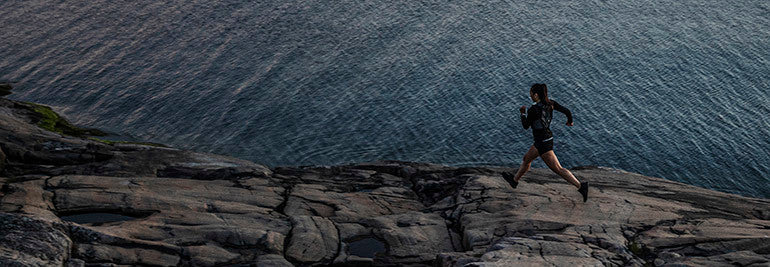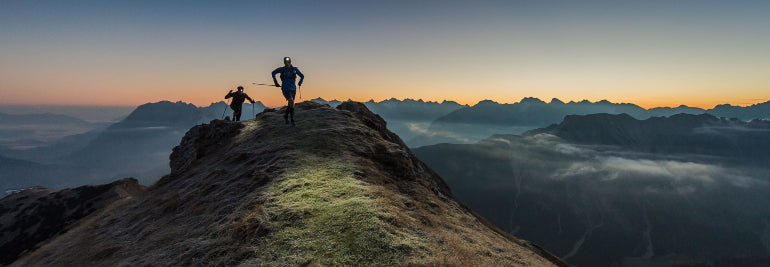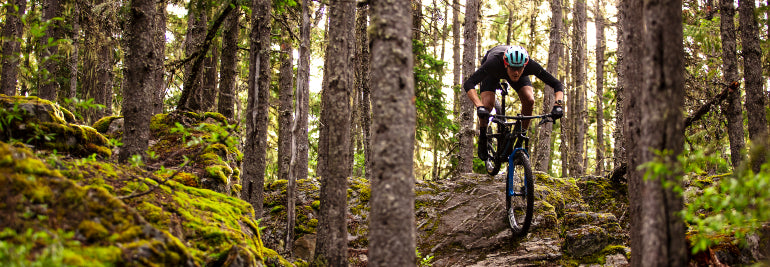

Suunto Blog

Run wild for nature!
Anyone who spends time in the great outdoors ends up revering nature and wanting to protect it. And it needs our protection more than ever with study after study showing the planet’s ecosystems and wild animal population are in steep decline because of human activity. We must move to stop this now.
You can be part of the change by becoming one of the million runners that Adidas Runtastic and its partners are calling on to lace up and run for the one million species currently threatened with extinction. To add your voice, sign up for the Run Wild Challenge on the adidas Running app, pick one of three animals to compete with, and get moving!
The Run Wild Challenge aims to inspire and educate runners by sharing knowledge and stories about three particular animals: Adjany the elephant, Tendrel Zangmo the tiger, or Pamoja the pangolin. When you sign up for the challenge on the adidas Running app, you’ll follow one of these three threatened animals through their habitat as you try to keep up with the kilometers they travel daily. As you do, you’ll learn more about their ecosystems, the foundations and people working to protect them, and more ways you can get involved to support them.
In partnership with the United Nations Environment Programme and Internet of Elephants, adidas Runtastic’s Run Wild Challenge will prove that athletes and outdoor adventure types are calling for new global efforts to protect the natural world and endangered species. They will take the results of the Run Wild Challenge to the UN General Assembly Biodiversity Summit this September.
To connect your Suunto app account with adidas Running, open Suunto app and tap “Profile”. Then click on “Connect to other services”. Select adidas Running and enter your adidas Running login details to connect the two apps.
Hop across to the Run Wild Challenge on adidas Running app and add your voice now!
Learn about Suunto Compatible partners

Six ways to plan a route for your next adventure
An essential part of outdoor adventure is planning. The better you are at it, the smoother, safer and more relaxed your trips.
Of course, there are many aspects to planning, from understanding the topography and distances, through to knowing your group and managing rest breaks. However, knowing your route is key. When that’s sorted everything else is more likely to flow.
Whether you want to start from scratch, use an existing route or something in between, here are six different ways to create a route for your Suunto watch to guide your next adventure.
Suunto app’s route planning capabilities are very versatile. Depending on the situation you can use the most suitable option – even on the go as all these work on your mobile.
Planning a route from scratch is just one of the many route planning options on Suunto app.
Plan a route from scratch
Just opening the map and starting to draw your own route is probably the first route planning method that comes to people’s minds. Just mark the starting point and key points along the way to draw the desired route to your destination.
Tip: To help the route planning process you can choose whether you want to follow “any road or path”, “all road types”, “all road types avoiding hills”, “paved roads” or “free drawing”. Using the most suitable option will make planning more efficient.
Plan using heatmaps
Suunto Heatmaps show the tracks frequently used by Suunto community all over the globe, based on millions of activities. Turn the heatmaps on and choose the desired activity type. Suunto heatmaps are sport specific. This allows you to differentiate between activities, for example, running and trail running. Heatmaps can be on while planning routes. This enables you to see where the popular trails are.
Tip: Suunto app also has “My Tracks”, a new feature showing where you have been during the last week, month or a year. Compare your own tracks with the general heat to spot areas and trails you haven’t yet been to.
Suunto app recommends popular routes for your location.
Use popular routes on Suunto app
When browsing Suunto app’s map view, you can swipe up a menu of route recommendations: the app automatically generates popular routes for the location you have selected. Simply select an activity type, see what others have been doing and select one you like.
Tip: If you want to see more route options, zoom out or change the location for your search and tap ‘Search here’.
Use an existing activity
Would you like to do that awesome run from last year again? Or has your friend been to an interesting trail? You can use existing activities to create routes. All you need to do is tap the three dots on top right of the activity screen and select ‘Save route’. The route then opens in Suunto app’s route planner so you can name the route and sync it to your Suunto watch.
Tip: If you want to find your old activities more easily,, add a trail name, location etc in the description field. You can then search for them in your Diary on Suunto app and create routes for navigation.
You can sync routes to Suunto app from Suunto compatible route services, like Wikiloc, and get access to their planning tools and route libraries.
Sync from a partner service
Suunto app is compatible with several route planning services, like komoot, Fatmap, Wikiloc, Twonav Land, Openrunner and2bulu (in China). Connect your Suunto app account with the partner service to get routes created there to be synced with your Suunto app – and your watch. You can find thousands and thousands of routes in the partner services and also use their tools, like route libraries, desktop apps and big screen solutions. (Learn more about Suunto's partners.)
Tip: Some of our route service partners are included in Suunto Value Pack. Learn more about it here.
Import a GPX file
Have you spotted an interesting route in the media or perhaps a race organizer has offered you the race route as a GPX file? To get that route on your watch, save it in a location you can access on your phone and open it using Suunto app. (Learn how to import a GPX file on Suunto app for iOS or Android.)
Tip: You can also share or save your own routes as GPX files using Suunto app: Go to the list of your routes and click the sharing button. Then select whether you want to share the route or save the GPX file.

4 ways to navigate like a pro with a Suunto 7
We’ve all been there: you head out for a run, and it feels really good and turns into an exploratory run and before you know it you either have no idea where you are or you need to find a shortcut back because you’re running late.
No need to fumble with your phone, the Suunto 7 has your back. Read on for its four ways to find your way. All these navigation aids can be utilized during any activity type with GPS.
Suunto 7 has detailed terrain maps available for offline use.
Breadcrumbs
Like the breadcrumbs left by Hansel and Gretel, the Suunto 7 always draws the path you have travelled on a terrain map. This feature allows you to follow your tracks back to your starting point. And you don’t need to slavishly follow the exact same route back; if you like you can take a shortcut and merge back with the breadcrumb route later.
Terrain maps
To aid with this on-the-go navigation the Suunto 7 also shows you detailed terrain maps that are automatically downloaded to your watch for offline use. Suunto 7 downloads and updates local offline maps with heatmaps automatically when your watch is charging and connected to Wifi.
The downloaded map area is based on your last known location and varies from 35 km × 35 km to 50 km × 50 km (from 22 mi × 22 mi to 31 mi × 31 mi), depending on where you are located. You can also create custom offline maps for your travels and adventures away from home.
Learn more about offline maps
The more a route glows on a Heatmap, the more popular it is.
Heatmaps
Another option is to use activity-specific Heatmaps on your Suunto 7. Heatmaps are simply maps showing the most popular routes of the Suunto community. That’s really useful when you are deciding on route options or exploring a new area.
Learn how to change map style during exercise.
Create routes on Suunto app and select which ones you want to use on your Suunto 7.
Preplanned routes
Suunto 7 offers offline route navigation with detailed outdoor maps. The routes can be synced to your Suunto 7 via Bluetooth from Suunto app. You can create a route from scratch or use an existing route. Simply select which routes you want to have available on your watch on Suunto app and sync. When your Suunto 7 is charging and connected to Wifi, an offline outdoor map is downloaded for each route to your watch automatically.
You can either start navigating with a preplanned route at the beginning of a workout or later during the activity. The selected route is visible in the map view of your Suunto 7. Zoom in and out with the top and bottom buttons, or tap to see an overview of the route and get notifications if you go off path.
Learn more about Route navigation with Suunto 7
READ MORELearn six ways to create routes for your Suunto

Follow this historic alpine run celebrating unity
Setting off on 06 October, 2020, ten trail runners will traverse 850 km and 55,000 m of vertical gain in the European Alps to mark the centenary of Italy’s annexation of South Tyrol and celebrate how far Europe has come since the wars of the 20th century.
The AlpsFrontTrail was initiated by Suunto trail runner and filmmaker Philipp Reiter and South Tyrollean photographer Harald Wisthaler. The adventure run aims to celebrate Europe’s unity and freedom, and to observe the historical consequences of division and rigid nationalism.
The Italian frontline during the First World War.
It all began earlier in 2020 when Philipp and seven other runners ran the 1400 km border that separated east and west Germany before its reunification in 1990. A German himself, Philipp says the project moved him and put his freedom in a different light.
“We had such a great team, had a lot of history lessons and I personally gained a different view on freedom,” Philipp says. “Freedom is never given, you always have to fight for it! After a skimo trip to South Tyrol, I visited all the old military bunkers there and got curious about the history behind them.”
Back home he read about the history of the front, one thing led to another, and the AlpsFrontTrail project was born.
Studying and planning the epic route has taken weeks. © wisthaler.com
Philipp believes this adventure run is particularly timely because the unity and peace that much of Europe has enjoyed since the end of the Second World War is being threatened by rising populism. The open borders and freedom of movement could be lost. He points to the closing of borders during the 2015 refugee crisis – including between Italy and Austria – and again more recently with the arrival of the COVID-19 pandemic.
“Watching the news nowadays you have the feeling that despite us living in a globalized world, the understanding of our ‘togetherness’ is really falling apart,” Philipp says. “Everyone is just in it for himself and greed is growing more and more.
“It’s very cool that as athletes we can show how sport can connect people and bring them together,” Philipp continues. “Athletes have a big reach, a strong voice in our communities and are mostly seen as honest. We have some power to make people think and give them a different perspective than many politicians usually do.”
It's hard to imagine troops fought in terrain this rugged. © Philipp Reiter
Running in teams of two, the runners will start in the Mediterranean city of Grado, Italy and then progress up into the Alps, following the Italian front in the First World War, and finishing at Stelvio Pass in northern Italy.
“It’s going to be around 120 km everyday though the heart of the Alps, with big climbs, technical terrain, maybe some snow on the ground and less daylight with the arrival of autumn,” Philipp says. “Plus, while most of us know one another, being in a campervan for more than one day can also get quite a challenging. It’s going to be hard in many ways."
Despite the hardships the project will involve, Philipp says the team aims to support one another and learn as much about the history as they can.
“We have different nationalities, different characters, different backgrounds, but we share one goal!”
Lead images: © Philipp Reiter
Follow AlpFrontTrail on Suunto Instagram and at alpfronttrail.com on October 6–14
Read more articles
Your path to mountain navigation mastery starts here
Welcome to the season of the FKT
No races? Conquer your own Everest

This playlist by Camo & Krooked will get you moving
Based in Vienna, Austrian Drum n Bass duo Camo & Krooked have been producing music since 2002 and have released four albums and played at dance parties around the world.
Reinhard Rietsch (Camo) and Markus Wagner (Krooked) teamed up with Red Bull this year to create a one of a kind concert experience that paired Drum n Bass with a live orchestra. The incredible show was filmed and turned into a film you can watch here.
Aside from performing or making tunes in the studio, their other lifelong passion is skateboarding. It takes more physical strength and mental focus than you might guess, they say.
The talented duo prepared a playlist for us designed to get you moving! Read on for our discussion about balancing the party life and staying in shape ...
Camo & Krooked performing in Konzerthaus, Vienna © Philipp CARL Riedl / Red Bull Content Pool
Play your own favorite tunes from your wrist
With the Suunto 7 smartwatch you can connect your headphones to your phone and control music and other audio – adjust volume, pause and skip tracks – straight from your wrist without taking your phone out of your pocket.
You can also listen to music without your phone: Spotify has just released an update to their Wear OS app that enables offline use. Simply connect your bluetooth headphones with your watch and download the tracks that you want to take with you!
With this new feature, Spotify Premium users will be able to download their favorite albums, playlists, and podcasts to listen offline. Free users will be able to stream their tunes in Shuffle Mode using a WiFi or cellular connection, as well as download any of their favorite podcasts directly to the watch.
LEARN HOW TO USE SPOTIFY WITH YOUR SUUNTO 7
What are your favourite sports and workouts?
We both love skateboarding and have been doing it for over 20 years, so that’s definitely our favorite sport. It’s great for training the whole body due to the body tension that gets generated when doing a trick, but also the mind doesn’t fall short. Every millisecond must be thought through. Timing and position are everything in skateboarding.
But we also enjoy going on a bike tour, going for a run and hiking occasionally.
How often do you workout each week?
About every second day if time allows! If there is a deadline coming up, sometimes less. But we always try to squeeze in a skate session, a jog or a bike ride. It helps us clear our minds after a long studio session. Sometimes we come back from the workout and are more creative than before!
How does staying fit help you as a DJ?
Tour life as a DJ/musician can be very draining. A confused body clock due to jet lag and not enough time for a proper lunch can be devastating for both body and soul. Therefore it is of great importance to us to stay fit. Fitness gives us enough energy reserves in case things don’t go as planned or the schedule is just exhausting. Never underestimate the synergy between body and soul either! A fit body will support your stress threshold.
Does the night life make it difficult to maintain a routine?
We try to maintain our daily routine as best as we can, but sometimes we simply can’t since flight schedules can be tricky. Especially when travelling overseas, the jet lag can be a thorn in the eye for days.
In these situations, it is important for us to eat healthy and keep being active throughout the day (even if it is just a walk through a city park), so both body and brain can acclimate to the new time zone quickly. Also, we avoid alcohol if we have jet lag.
What is your approach to eating well and nutrition?
Usually three meals a day. The breakfast being the most important of all and probably the richest in nutrition value. We avoid lemonades and juice as much as we can and try to eat as little meat as possible nowadays. Before a gig we always try to eat the lightest and most energizing meals available, and the last meal of the day shouldn’t be too late.
Back in the days we used to go for the biggest steak on the menu, but we had to learn it the hard (and heavy) way and rethink our food habits. Having no energy after dinner and feeling like you have a rock in your stomach whilst DJing is one of the worst feelings.
What does music and movement mean to you?
Music and movement are two things that simply belong together. Music is frequencies moving through space, and these frequencies can make people move.Music can be listened to on any occasion, and that is the beauty of it. But for the genre we love and live for – Drum & Bass – it is all about moving your body. And that’s why we still can’t get enough of it after all these years. No other music genre contains so much energy and euphoria as Drum & Bass.
See you on the dance floor!
Lead images: © Harry Tiits / Red Bull Content PoolBody images: © Alissa Tsuvilskaja
Read more articles
These Japanese DJs live for music and movement
Meet the Mambo Brothers, two health conscious DJs living the night life
The benefits of training to music and making your best playlist

No races? Conquer your own Everest
Ever since the first reconnaissance mission to explore climbing Mt Everest nearly a century ago, the world’s highest peak has loomed large in the minds of adventurers all over the world. From the first attempt in 1922 through to Suunto Ambassador Kilian Jornet summiting the 8848 m peak twice in one week in 2017, Everest has represented the ultimate challenge.
Like so many things at the moment, Mt Everest is currently closed due to COVID-19. But that doesn’t mean you can’t conquer your own Everest. The closure of travel and racing represents an opportunity to imagine new adventures that inspire the heart and mind. One for the list is ‘Everesting’.
Karsten Madsen cruises on one of the laps in his first Everesting ride back in May. © @matthew.tongue
What is Everesting?
Simple really; pick any hill, anywhere in the world and complete repeats of it until you climb 8848 m – the equivalent height of Mt Everest. The challenge has become particularly popular with cyclists, but can be done on foot or even virtually in the comfort of your own home. Get the job done and you can get your name in the Everesting hall of fame.
How did it start?
The first Everesting event was in 1994. The grandson of the famous mountaineer George Mallory, who disappeared on Mt Everest in 1924, biked up 1069 m Mount Donna Buang in Victoria, Australia eight times. The format and rules were later developed by Australian cyclist Andy van Bergen, who was inspired by Mallory's effort. Andy also heads up the Hell 500 cycling collaborative which runs www.everesting.cc, the global hub for Everesting.
Everesting boom time
We all need goals to aim for. Otherwise our motivation wanes. For athletes and adventurers, COVID-19 wiped out the usual goals, including races and travelling to adventure destinations. Athletes and adventurers have had to find new ways to stay motivated. That’s why FKT (fastest known time) attempts have exploded in number this year. And for the same reason so have Everesting attempts.
Already so far in 2020, the fastest known times for successful Everestings have fallen 10 times in the men’s category, and seven times in the women’s category. At the time of writing this, Irish road racing cyclist Ronan McLaughlin holds the men’s record: 07h04m. Brit and former pro cyclist Emma Pooley holds the women’s record: 08h53m.
Karsten says this Everesting attempt is so tough he might find his breaking point. © @matthew.tongue
Is this the most ambitious Everesting attempt ever?
Professional Xterra triathlete 28-year-old Karsten Madsen has his work cut out for this coming Saturday. Starting at 3am – when the local bears are the most active – the Canadian Suunto athlete will set out on his MTB into the lush forests of British Columbia to attempt to pedal up Mount Sproatt (1826 m) seven times. He’ll start his ascent via the ‘Into the Mystic’ MTB trail which has four pitches so steep he’ll have to maintain 400 watts power to avoid having to push his bike. The descent, via the famous Lord of the Squirrels Trail, won’t afford him any real rest time because of the gnarly terrain, including rock rolls and slabs and a tangle of tree roots. To prepare for the bumpy descents, Karsten has been doing special training for his hands and arms. Each loop is 28.9 km, with 1200 m elevation gain. Karsten aims to finish it in 15 hours.
“This project gets me excited because people who live here in Whistler know that trail well,” he says. “When you tell them you are going to ride it seven times, it blows their minds.
We caught up with Karsten before the ride and asked him about his big adventure.
Carefully monitoring his time and watts on his Suunto 9 will play a key part on the day. © @matthew.tongue
We heard you Everested another peak recently?
Yes, I Everested Whistler Peak (2181 m) in Kadenwood on May 22. I did it on a road bike on local roads. Each of the 39 laps was 6.4 km, with 321 m elevation gain. The total distance was 247 km and my average watts was 300. It took me 11 hours and change. I decided to do it only four days prior to starting.
How is Everesting with a mountain bike on a MTB trail going to be different?
It comes with a logistical nightmare. The loop is a lot longer so I have to be a lot more diligent to make sure I have everything I need on each lap. I need to be self sufficient out there and make sure I get everything I need when I go through basecamp. With this one I'm not totally sure I can pull it off. On the MTB, I don't know. The trail down is really physically hard.
Why did you choose this next trail for an Everesting attempt?
Personal draw. I use it for training a lot. The climb portion of it is very indicative of a lot of the races I do. Plus, growing up in Ontario we didn't have mountains, and the first time I rode up into an alpine environment was up on this trail. It was one of the top five best days in my life. It made me feel amazing in my very soul. I’m also King of the Mountain, or the person with the FKT (fastest known time) on it.
Unlike most Everesting adventures, this one will be tough on the way down, too. © @matthew.tongue
Are these sorts of long adventures your focus now?
Yes and no. COVID opened a different window into another life. These are the sorts of things I planned to do after my racing career ends. I’m in the prime of my endurance life and my goal is to win an Xterra World Championship. Early in the COVID lockdown, we had no idea whether we could race, so we’re just trying to find ways to stay motivated and get in some big blocks of training. If you’re a solutions based person, you'll find a way to make the best out of a terrible situation. I got thinking about how to create an event that is COVID appropriate and that people find interesting. I realised people find long adventures inspiring. Thing is I can do this now because I’m in the prime of my life and have time to recover. It all developed into an opportunity for sponsors to showcase something inspiring happening.
How can people follow your attempt Saturday?
Follow along via my Instagram feed: @karstenmad. I'll be posting updates when I can. And to support, please consider donating here. My lofty goal is to raise $8848, covering every meter of the adventure. Best thing is there is a laundry list of prizes people can win. All the proceeds go to WORCA (Whistler Off-Road Cycling Association) In 2019 they were granted a $120,000 annual budget, and this year, due to COVID, it was slashed to $40,000. I rely so much on these trails. MTBing gives people in this town a break from all this COVID chaos. It's pure therapeutic fun.
You aren’t following the Everesting rule that requires the way up to be the same as the way down?
That’s right. It’s a simple decision really. Part of it is forced. On most MTB trails the trail up is only for climbing. You don't descend it. I understand I'm not following the correct Everesting rule, but literally no one could climb the descent trail. It's so gnarly. Even to go down is full on. You'd be hiking your bike up.
Karsten's family are supporting him, including making sure he gets plenty of calories. © @matthew.tongue
How have you been training for this?
I've done 15 or 16 laps up this year. I know every inch of it. Over a weekend recently some friends and I did a huge gravel ride, including some bushwhacking. We were gone from 6am, to 09.30pm. It was a super hard day. The next day I rode my pacing laps. I have years of endurance training under my belt. I’m also getting plenty of rest. The cool thing about this project is I have learned a lot about training.
What’s your plan for the ride in terms of food and pacing?
Pacing will come from knowing the lap time, and really following power data. If I hold 300 watts I know what that lap time will look like. Having a Suunto 9 will help me keep an eye on the data. I’ve set it up so I can see all the important data fields: time, current power, average power, current heart rate, and elevation gain. I really have to make sure I'm on time with my laps. One risk is riding too hard too early or, alternatively, maybe I let the power slip.
In terms of food, basically every lap I'll be eating a bunch of Cliff bars, blocks, and cookies and drinking a 750ml bottle with 320 calories. Then I’ll introduce flat coke, pretzel sandwiches, and Pringles. I want to have a little real food because I'll need more calories for the way down.
What have you learned from Everesting?
To be a good racer you have to have a robotic feeling. We shut off emotions, like feeling nervous, and get into a kind of tunnel vision just to execute. Then we only start feeling again at the finish line. These Everesting projects are a super soul fulfilling thing. Such a different experience. They can bring a community together, and rally for a cause that’s bigger than yourself. It's not about me, it's about raising money for a cause. Whereas with racing it feels more selfish, just thinking me, me, me, and how can I be better.
Lead images: @matthew.tongue
Read more articles
Welcome to the season of the FKT
Start your path to mountain navigation mastery here
How to adapt your training when the unexpected strikes














































































